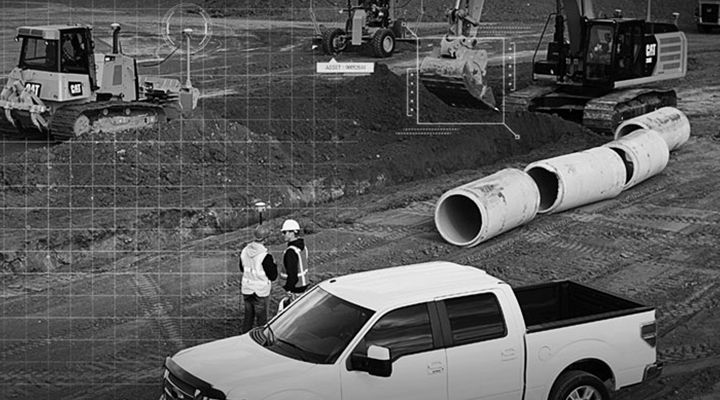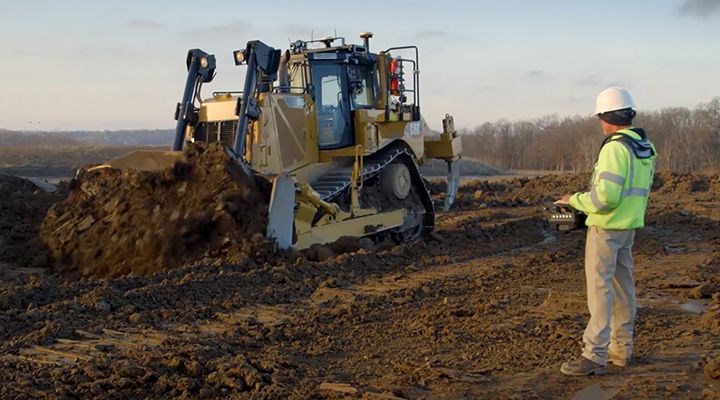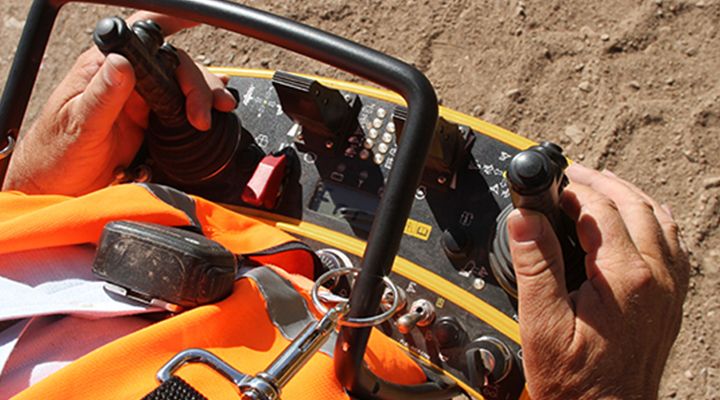If you already have an existing account with another Cat App, you can use the same account to sign in here.
One Account. All of Cat.
Your Caterpillar account is the single account you use to log in to select services and applications we offer. Shop for parts and machines online, manage your fleet, go mobile, and more.
Account Information
Site Settings
Security
Condition Monitoring Reports Get Cost-Saving Results
When it comes to managing and allocating assets, running reports based on your condition monitoring and telematics data is a smart way to track your fleet, monitor the status of your equipment and find smart new ways to control costs. We're watching the trends on reporting technology for construction customers; here's what we learned.
Estimated read time: 5 minutes
Tech watch
Tracking CO2 Emissions From Construction Equipment
As strict emissions regulations become more common, you’ll need to be able to prove that your fleet is running as clean as possible. A new reporting function within Cat® VisionLink—the telematics data analysis tool from Caterpillar®,—lets you monitor and track CO2 emissions from construction equipment of all kinds.
Estimated read time: 5 minutes
Creating Actionable Information
Condition monitoring and telematics systems gather valuable data from your equipment. If you’ve used telematics or seen in action, you know a quick check of dashboards can tell you a lot: daily fuel usage, production data for a particular jobsite, or even the location of a machine that’s due for service.
But behind these snapshots, there’s even more insight. That’s where reports — in-depth summaries of fleet performance — come into play.
Targeted reports turn raw data into actionable information that can be pushed to team members. These individuals can then use it to improve company and site operations:
· Site managers can look at groups of assets or individual machines to track operator efficiency and machine performance. |
Most data-based reporting systems offer a wide variety of standardized reports, covering a broad range of typical use cases, for example: · Asset Status - location, hours, utilization
|
“Reports give you the ability to look at the ways things like idle time events can affect total machine operating costs.”
– Shane McBride, Digital Products Manager, Caterpillar, Inc.
Let’s look at the capabilities of Cat® VisionLink as an example. Cat Digital Products Manager Shane McBride notes that a significant amount of intelligence goes into many of these reports, especially those involving utilization.
He says, “Today’s reporting systems automatically gather raw data from telematics systems and other sources, then perform complex calculations. They can compensate for poor or missing data, too. In VisionLink’s case, each report can be configured to include key information while filtering out things that are less relevant to what you’re trying to accomplish.”
And those reporting capabilities are constantly evolving. McBride explains, “VisionLink now offers over 20 different kinds of standardized reports. We get requests across the board from dealers and customers for new reports, such as DEF consumption or payload monitoring, so we’re always working to expand our reporting capabilities.”
Idle Time Cost Analysis
Cost analysis reports are one of the newest additions to the stable of available VisionLink reports, McBride says. “These reports give you the ability to create a cost-per-hour metric measurement and look at the ways things like idle events can affect total machine operating costs.”
He points to a recently added Avoidable Idle Time report as an example of the way advanced capabilities enter the VisionLink reporting library.
“Our team worked directly with the Cat dealer in Germany, Zeppelin, to develop this report,” McBride remembers. “The dealer leveraged customer input to drive the contents of that report and give us feedback. The goal was to take advantage of VisionLink’s ability to track idle time and especially idling costs. This report helps customers understand how they can make small tweaks in behavior to reduce operating and runtime costs.”
The ability to track cost factors based on accurate real-time data—not estimates or guesswork—is what allows you to identify where those small tweaks will have the most impact.
Tracking Operator Behavior
The Avoidable Idle Time report is all about setting a policy for idling a machine, then tracking how well operators adhere to it. Idle policy is important in much of Europe because machine shut down is mandatory if a machine idles for longer than a specified number of minutes.
“And,” McBride cautions, “more countries are imposing carbon taxes or fines, and the idea of requiring a 10-15 minute idle time limit is starting to spread. Carbon emissions concerns are also beginning to pop up in the U.S. So, that’s what we’re targeting in that report. We really want to help customers see the costs of excessive idle diminish significantly.”
McBride notes that idling cost factors will be different for every user, depending on how many and what kind of costs are included. “Is it just fuel plus maintenance costs, or are you including operator costs and depreciation, as well? There are lots of things to consider.”
“The company gained 33 work hours of work per week, resulting in an estimated annual savings of €39,000.”
– Shane McBride, Digital Products Manager, Caterpillar, Inc.
Proven Cost Savings
How cost effective can this new report be? When a Zeppelin customer started using it to help reshape idling behavior on a jobsite, the results were dramatic. It showed where they could reduce short-interval usage and excessive idling—such as warming up the engine for too long or running during breaks.
At the conclusion of the study period, the test fleet went from 311 work hours with 31.3% excessive idling events (over five minutes), down to 344 hours of work time with 9.3% idling per week. The company gained 33 work hours of work per week, resulting in an estimated annual savings of €39,000.
McBride notes that exact cost savings are dependent on what’s included by the user. “Everyone calculates those cost factors differently, and VisionLink gives you that flexibility. But regardless of the precise numbers, the opportunity to reduce your excessive idle time a cost benefit across the board.”
The reporting features of VisionLink are something of a hidden treasure, McBride concludes. “I think there’s a lot of functionality that’s overlooked or underexplored. Reports can be used to reduce costs, avoid failures and track ROI. Make sure you’re looking at all the reporting capabilities inside VisionLink and you’ll definitely end up money ahead.”
RELATED STORIES
You’re here to get ideas to grow your business. Read on for machine insights and expert tips and tricks to get more out of every job.
-
Productivity - More Efficiency. Better Results.
Cat® Technologies gives you the accuracy, consistency and productivity you want.
Learn More -
Automation & Autonomy: What's the Difference?
These words get used interchangeably, creating confusion. To improve consistency, we've defined these terms.
Learn More -
Machine Control & Automation Can Add To Your Bottom Line
Technologies that enhance machine performance can add to the bottom line.
Learn More -
Ask the Expert
Answers on fuel efficiency from an expert - Jason Hurdis, GCI Global Market professional.
Learn More






